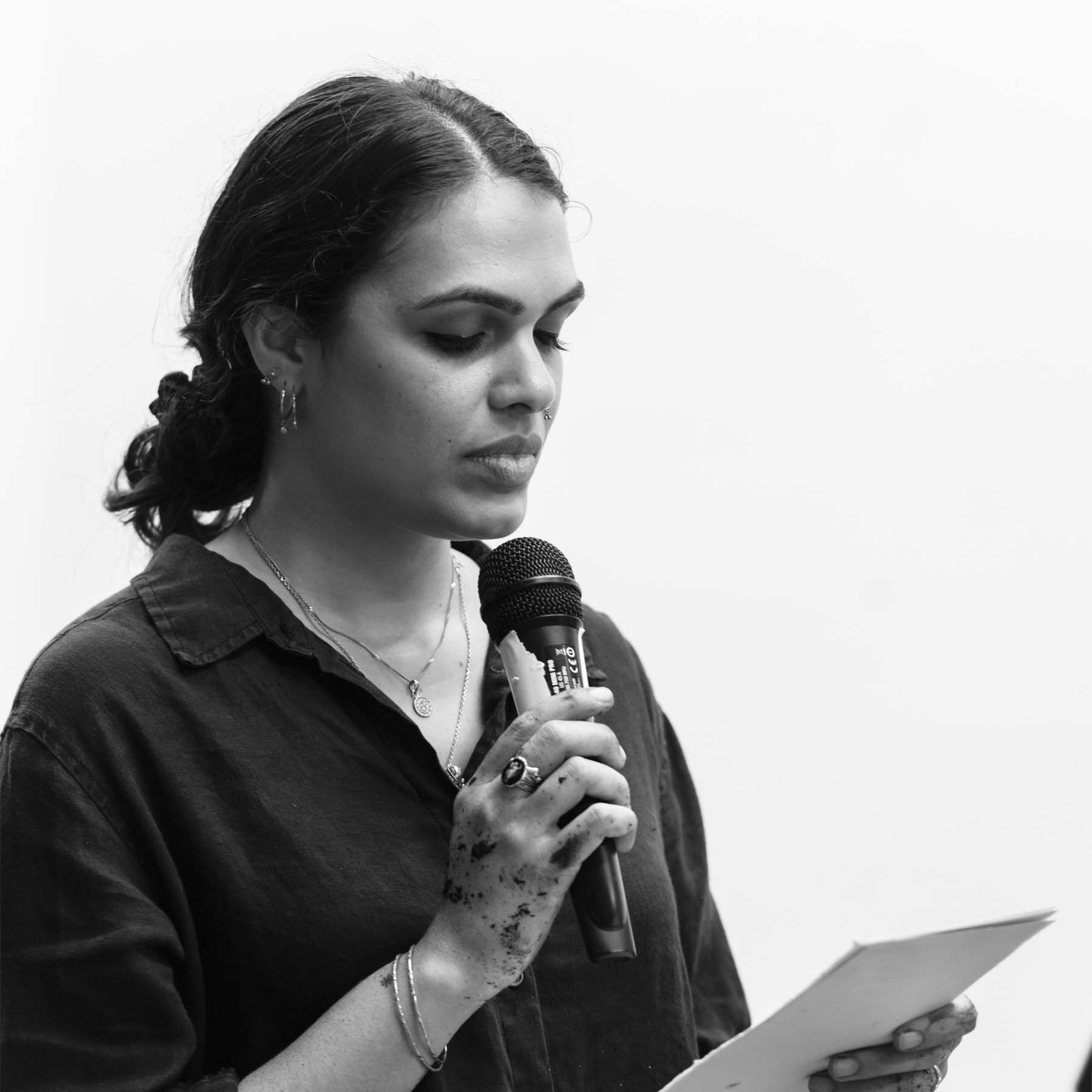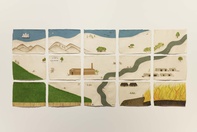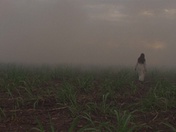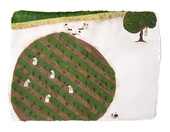Sancintya Mohini Simpson
Jagera/Turrbal Country, Meanjin (Brisbane)
2021
Displayed 2021 at Museum of Contemporary Art Australia

Sancintya Mohini Simpson
Born 1991, Jagera/Turrbal Country, Meanjin (Brisbane). Lives and works on Jagera/Turrbal Country, Meanjin (Brisbane)
Sancintya Mohini Simpson is an artist and researcher based in Brisbane. She is a descendent of indentured labourers sent from India to work on colonial sugar plantations in South Africa. Her work navigates the complexities of migration, memory and trauma through addressing gaps and silences within the colonial archive, moving between painting, video, poetry and performance to develop narratives and rituals. Her practice is grounded in collaboration and community engagement, connecting wider narratives surrounding descendants of indenture and their diaspora communities. Simpson’s work has been shown at venues around Australia. For The National 2021 she presents a major new body of work in watercolour and video.
Image courtesy the artist and Milani Gallery, Brisbane © the artist
Artist text
by Pedro de Almeida
It would be inaccurate to suggest that ours is the age of mass human flow between borders, contested or otherwise. Whether prompted by war and displacement, or the economic exploitation of nameless millions who are euphemistically referred to as migrant workers, the 21st century may not yet be the apex of such a paradigm. Rather, it is a coda to an earlier era of modernity that saw at least as much, only with fewer witnesses.
Sancintya Mohini Simpson’s art gives form and feeling to the marginalised histories of indentured labour from India, and its far-reaching legacies. This interest stems from her identity as a first-generation Australian whose family’s maternal heritage has been deeply shaped by migration from South India to South Africa between 1863 and 1911.
My continuing impetus to research this under-documented mass migration of people from my family’s homeland is my way of trying to understand the complex dynamic between what for millions was an unjust existence, while bringing to the fore the individual and collective agency that expressed itself, often in subtle and culturally specific ways, in the fields that built empires.
In response to this central concern, Mohini Simpson has created kūlī / karambu (2020–21), a suite of watercolour and gouache paintings on wasli, a type of handmade paper that originated in India in association with traditional miniature painting. Presented in a large grid, kūlī / karambu depicts topographic scenes of figures of women at work, in fields intersected by a river and coastline. These graphically unadorned paintings suggest the encroachment of and escape from imperialism. Moreover, the work’s title underscores the conjoining of cultures through language: kūlī being a caste term for porter (considered offensive in South African Bhojpuri), karambu being a transliteration of the Tamil word for sugarcane. Cumulatively, the paintings emerge from Mohini Simpson’s inheritance of stories handed down through recurring conversations with her mother, whose migration to Brisbane from Durban underpins a generational remove from difficult family experiences that have been generously, if reticently, shared.
Amplifying this, Mohini Simpson has brought the moving image, sound and scent to bear on her subject with the creation of Dhūwã̄ (2020). The film opens with the calming sound of rolling waves, then birds ominously gliding past a crescent moon. Soon, the camera reveals a thick, claustrophobic canopy of sugarcane leaves, as a figure dressed in white cloth is glimpsed before disappearing. Momentum builds with the repetitive sounds of hacking associated with the hard labour of sugarcane harvesting, and immediately there is flame and ash and smoke – the white noise of a fierce blaze that signals both destruction and renewal. Mohini Simpson’s installation is tempered by the subtle scent of burnt sugarcane, which hints at the work’s title, Dhūwã̄: a transliteration of the South African Bhojpuri word for smoke. It brings our senses to bear on the appropriation of many lands, including Australia, on which this crop has been profitably cultivated for centuries by hands whose liberty was often deprived.
Artist’s acknowledgements
Sancintya Mohini Simpson is represented by Milani Gallery, Brisbane.
The artist thanks: Assistants: Isabel Wengert, Sidonie Hall-Jordan and Marc Pricop;
The artist thanks: Cinematographer: Audrey Lam; Editor: Benjamin Leadbetter; Sound designer and recordings: Isha Ram Das; Sound recordings: Lawrence English; Colour grading: Jeremy Virag; Performer: Ruhiyah Ali, and Project support: Jenna Baldock.
This project was supported by the Queensland Government through Arts Queensland, and by the Australian Government through the Australia Council, its arts funding and advisory body.


